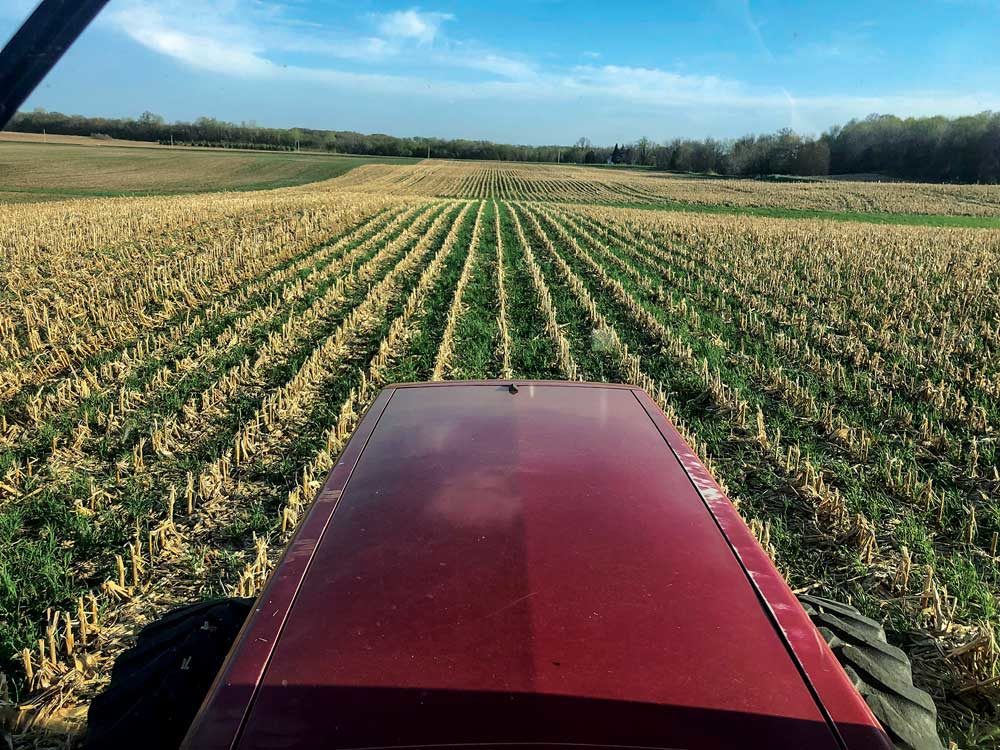No-Till Farmer
Get full access NOW to the most comprehensive, powerful and easy-to-use online resource for no-tillage practices. Just one good idea will pay for your subscription hundreds of times over.

Tim Little, Faribault, Minn., has seen cover crops come full circle on his 300 acre operation. Growing up on a dairy outside Dundas, Minn., Little says his dad, Harold, was committed to using cover crops — they just weren’t called that in those days.
“Dad had diversity back then,” he says. “My dad grew oats, corn, alfalfa, red clover, timothy and grass.”
Harold’s commitment to conservation extended beyond crops and he was particular to leave clear waterways, even when using a moldboard plow. Little says his father taught him early on that it was important to fight soil erosion.
Little got started farming by renting 160 acres with his brother, Phillip, in 1974. He follows a traditional corn and soybean rotation, but maintained traditional tillage practices for many years. He struggled with soil loss on his hilly ground and was reminded of those early lessons in conservation.
“I tried to do what I could to prevent erosion,” he says. “We would get big rain events and the topsoil would end up at the bottom of the hill…